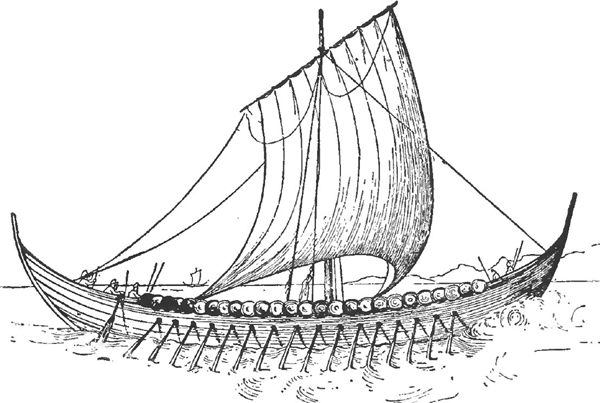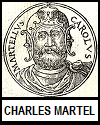| Medieval Viking Longship |
|---|
| www.studenthandouts.com ↣ World History ↣ European Middle Ages ↣ Medieval Maps and Pictures |
|
This illustration is of a Viking longship, powered by strong oarsmen and a large sail. These Norse ships traveled across the Atlantic Ocean, reaching the coast of North America in the eleventh century. Click here to enlarge. The Viking longship, also known as the Viking ship or Norse longship, was a type of vessel that played a significant role in the expansion and exploration of the Viking Age, which spanned from roughly the 8th to the 11th century. These ships were a key element of Viking culture and had several important significances. Exploration and Trade: Viking longships were exceptionally well designed for both river and open-sea navigation. Their shallow draft allowed them to sail in rivers, which enabled Vikings to explore and trade in regions far inland. This exploration and trade network helped connect distant cultures and facilitated the exchange of goods and ideas.  Raiding and Conquest: The longship's versatility and speed made it ideal for raids and conquests. Vikings used these ships to launch surprise attacks on coastal settlements throughout Europe, earning a fearsome reputation as skilled raiders. The longship's ability to navigate shallow waters also allowed them to reach previously inaccessible targets. Raiding and Conquest: The longship's versatility and speed made it ideal for raids and conquests. Vikings used these ships to launch surprise attacks on coastal settlements throughout Europe, earning a fearsome reputation as skilled raiders. The longship's ability to navigate shallow waters also allowed them to reach previously inaccessible targets.Cultural Symbolism: Longships were not just functional vessels; they also held significant cultural and symbolic value for the Vikings. They were often adorned with intricate carvings and served as a symbol of Viking power and prestige. The dragon heads or serpent motifs on the prow were not only decorative but also intended to intimidate enemies and protect against evil spirits. Innovation in Shipbuilding: Viking longships were among the most advanced ships of their time, featuring innovations such as the clinker-built construction method, which involved overlapping planks to create a flexible yet sturdy hull. This construction allowed the ships to flex with the waves and made them highly seaworthy. Military Tactics: The design of longships influenced Viking military tactics. Their shallow draft allowed for beach landings and quick disembarkation of troops, enabling hit-and-run tactics and surprise attacks. These tactics were crucial to the success of Viking raids and conquests. Cultural Exchange: As the Vikings used their longships for exploration and trade, they came into contact with various cultures and peoples. This contact led to the exchange of ideas, technologies, and goods, contributing to the development of Viking culture and influencing the cultures they encountered. Legacy: The legacy of the Viking longship continues to influence ship design and maritime culture. Even today, modern reconstructions of these ships are used for educational and cultural purposes, and they are celebrated as a symbol of Scandinavian heritage. To sum it up, the Viking longship was a versatile and innovative vessel that played a crucial role in the Vikings' explorations, conquests, and cultural exchanges during the Viking Age. Its design, tactics, and cultural significance have left a lasting impact on maritime history and Viking heritage. |
 |  |  |  |  |  |
| Middle Ages Books and Films | Middle Ages Outlines and PowerPoints |
| Middle Ages Maps and Pictures | Middle Ages Study Games |
| Middle Ages Miscellany | Middle Ages Printable Worksheets |
| www.studenthandouts.com ↣ World History ↣ European Middle Ages ↣ Medieval Maps and Pictures |








